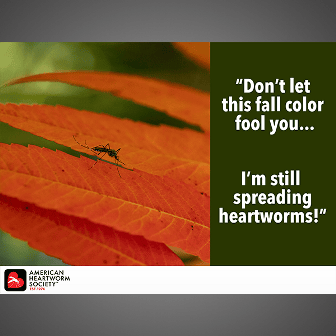STEPHEN JONES, DVM
Q. Why is melarsomine recommended by the American Heartworm Society (AHS), given the potential for complications during adulticide treatment?
A. Adulticide treatment is essential to preventing disease transmission and progression. With melarsomine treatment, worms are eliminated quickly and the progression of disease stops. The AHS protocol, which includes three injections of melarsomine, kills more than 98 percent of worms in a known and controlled period of time. Other components of the protocol—administration of macrocyclic lactones, cycline antibiotics and prednisone, as well as cage rest—have clearly reduced the risk of thromboembolism and other treatment complications.
Q. Nevertheless, melarsomine is an arsenical with potentially serious side effects. How can these be minimized?
A. Two of the most important components of safe, successful use of melarsomine are:
Accurate dosing:
It’s essential to administer the proper amount of medication. Overdosing
can potentiate pulmonary edema and, possibly, death. Underdosing by as little as 10 percent can significantly reduce efficacy and prevent elimination of infection.
Proper administration: The target site for injection is the epaxial muscle, a meaty muscle covered by fascia, with a good blood supply. If melarsomine is administered into a smaller muscle (e.g. a rear limb), significant and protracted lameness can develop. If administered into subcutaneous tissues, the formation of a sterile abscess is likely. Intravenous administration is fatal (always aspirate before injecting).
Q. What other tips do you have for melarsomine administration?
A. Potential complications can be minimized with the following steps:
Keep the dog standing during injection:
Start with a standing patient and have a technician restrain the dog to prevent sitting and excessive movement.
Change the needle:
A new needle hurts less, so the dog is less likely to move during injection. It also ensures that no drug is tracked through subcutaneous tissues, where it can cause inflammation and soreness.
Use an appropriate needle size for each patient:
Use a 1½”, 22 -gauge needle for large dogs, but consider using a 1”, 23-gauge needle for smaller dogs.
Angle and aspirate:
After calculating the proper location and depth, insert the needle at a slight angle; aspirate, then inject slowly.
Stop the injection if needed:
If the dog begins to squirm during the injection, stop, then restart when the dog is still again. Sedation is rarely needed, but is an option.
Limit the dosage per site to 2 ccs:
With larger volumes, split the dose into two injections.
Apply pressure for about a minute after the needle is withdrawn:
This helps prevent drug from seeping back into the subcutaneous tissues. I have practiced in a heartworm-endemic area for more than 30 years. Prior to utilizing the AHS treatment protocol, roughly one-third of my cases developed complications during adulticide treatment. Now the protocol has reduced the number of complications I see to a minimum.







